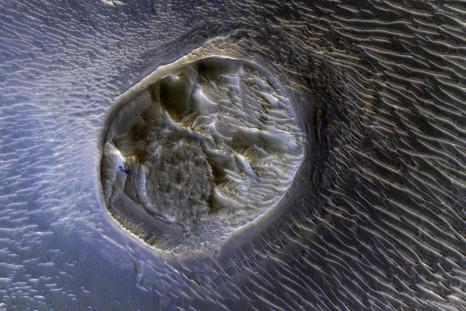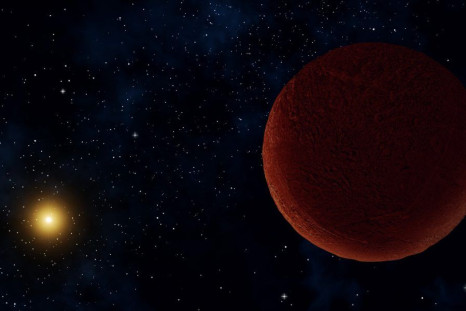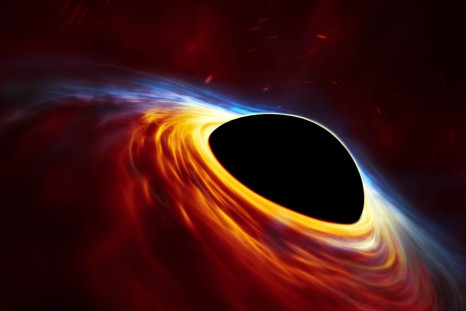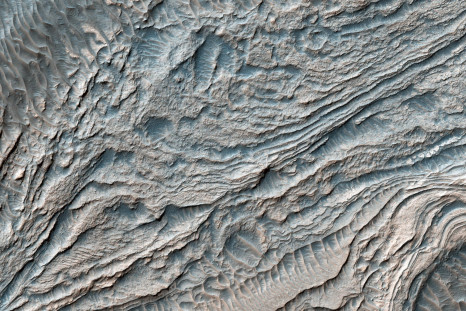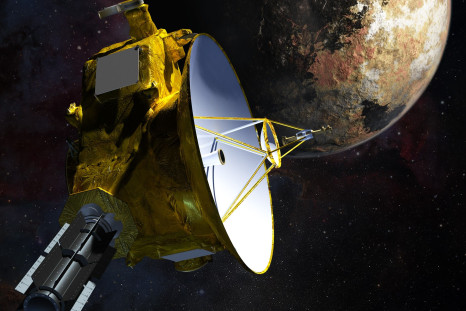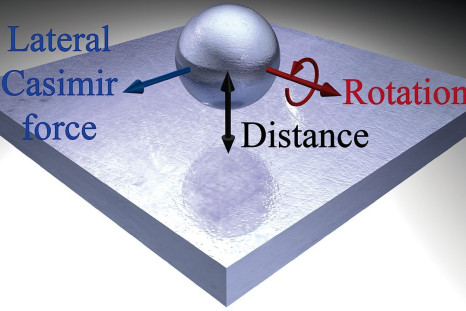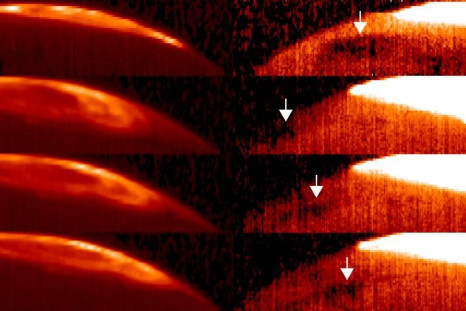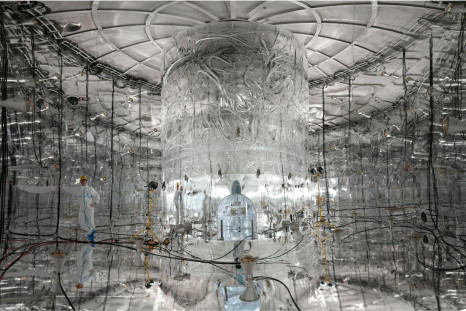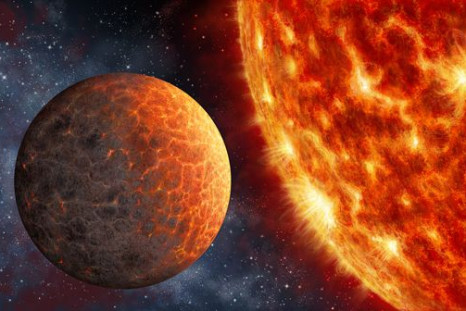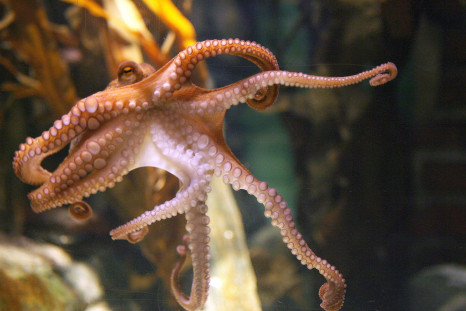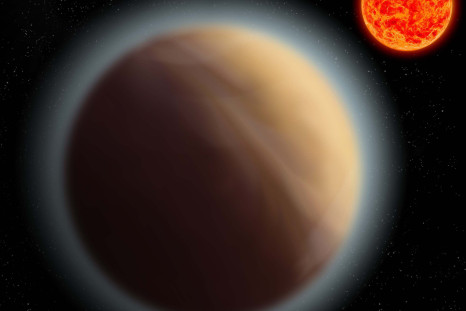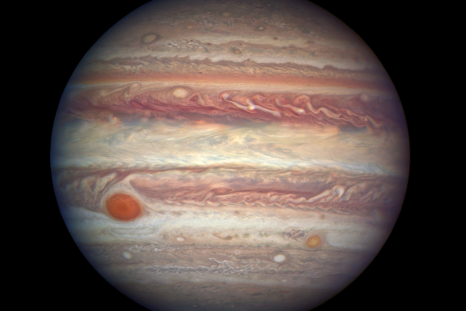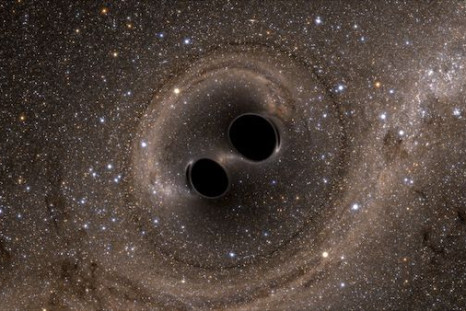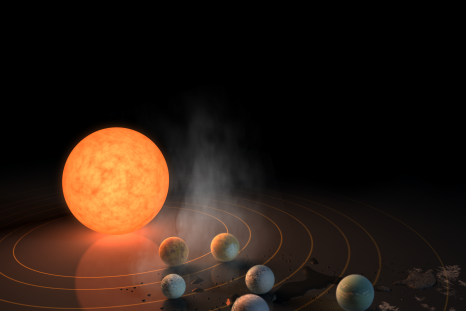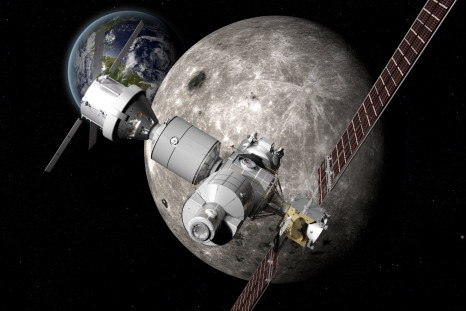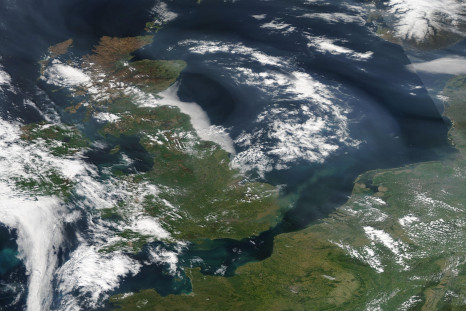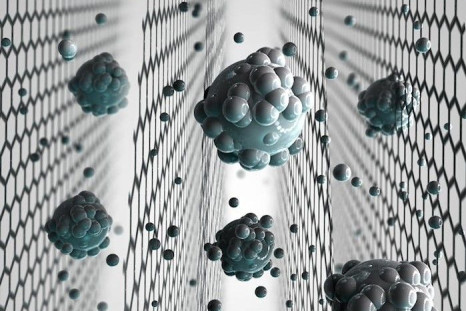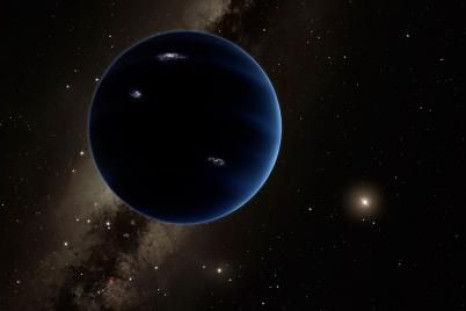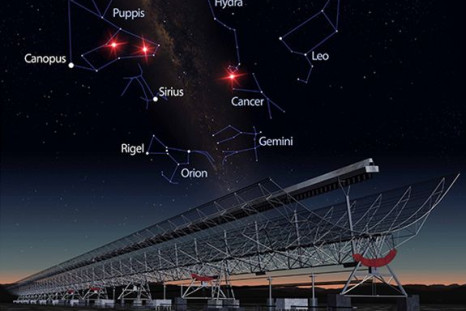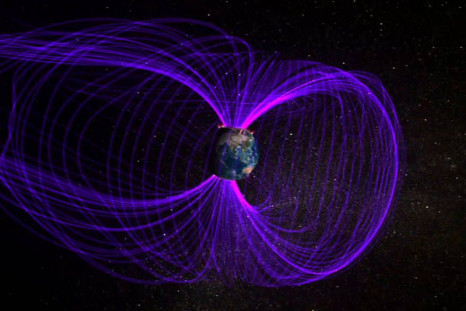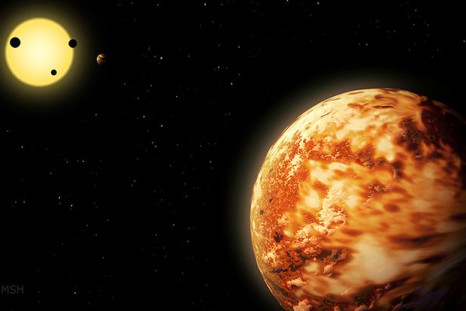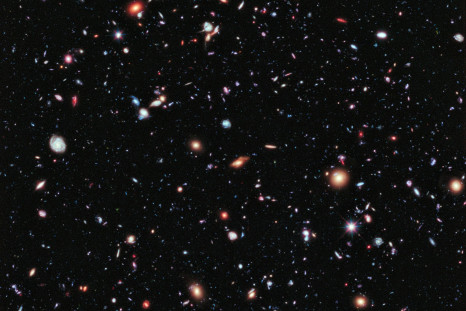NASA's Mars Reconnaissance Orbiter Photographs A Small Mesa On The Red Planet
The space agency released an image, captured using the MRO’s HiRISE camera, showing a mesa in the Noctis Labyrinthyus region.
Distant, Dim Object DeeDee May Soon Be Added To List Of Solar System's Dwarf Planets
Fresh observations have revealed that DeeDee, an objects in the outskirts of the solar system, is massive enough to be spherical — the criterion necessary for astronomers to consider it a dwarf planet.
First-Ever 'Image' Of Dark Matter Reveals Filaments That Link Galaxies
A team of astronomers has succeeded in taking a composite “image” that they say shows dark matter filaments connecting galaxies.
What Does A Black Hole Look Like? Astronomers May Have Just Succeeded In Snapping A Photo
After five nights of observations, astronomers associated with the Event Horizon Telescope project said Wednesday that they may have succeeded in snapping a photograph of Milky Way's supermassive black hole.
Water On Mars: NASA's Mars Reconnaissance Orbiter Snaps Image Of Layered Deposits In Melas Basin
Scientists believe that the basin, located in the red planet’s southern hemisphere, once had a 1,300-foot-deep lake.
Do Naked Singularities Exist? Quantum Effects May Be Shielding The Universe From Uncloaked Infinities
In a new theoretical study, a team of researchers state that quantum gravity would very quickly turn a naked singularity, even if it is created, into a black hole.
How Bright Is The Universe? NASA's New Horizons Could Help Scientists Measure Cosmic Optical Background
A team of researchers has used archival data from the Long Range Reconnaissance Imager on board NASA’s New Horizons spacecraft to measure visible light from other galaxies.
Researchers Study Casimir Effect On Nanoparticles Rotating Near A Flat Surface In Vacuum
The observations could help scientists and engineers develop better nanoscale objects and circuits.
Jupiter, Known For Its Great Red Spot, Has A Great 'Cold' Spot Too
Scientists believe the weather system, located much higher in the gas giant's atmosphere than the Great Red Spot, is a byproduct of the planet's massive aurorae.
Where Is All The Antimatter? Experiment Hunting For Hypothesized Radioactive Decay Could Provide Answers
Researchers associated with the GERDA collaboration in Italy have embarked on an ambitious experiment that aims to answer a longstanding question — why is there something rather than nothing?
Kepler 1649b: Venus-Like Exoplanet Discovery Could Help Scientists Understand Habitable Zones Of Red Dwarfs
The discovery, in addition to shedding light on what the boundaries of extrasolar habitable zones are like, may also provide crucial insights into Venus’ evolution.
Octopuses, Squids And Cuttlefish Retain Ability To Defy Genetic Instructions, Edit Genes On The Fly
A new study has revealed that these "smart" cephalopods make prolific use of RNA editing, which allows them alter genetic information without changing the underlying DNA code.
GJ 1132b: In A First, Astronomers Detect Atmosphere Around Nearby Low Mass 'Super-Earth'
The exoplanet, located just 39 light-years from Earth, is the most Earth-like planet around which an atmosphere has so far been detected.
Jupiter's Great Red Spot, Turbulent Atmosphere Revealed In New Hubble Image
The image was captured Monday, when Jupiter made its closest approach to Earth in a year, and just days before it came into opposition.
How Do Pairs Of Merging Black Holes Form? Simulations Help Scientists Solve Longstanding Puzzle
A team of researchers has taken a significant step toward solving the longstanding mystery surrounding these complex and calamitous events.
Hunt For Alien Life? Red Dwarf Stellar Flares May Have Made TRAPPIST-1 Planets Uninhabitable
According to fresh analysis of raw photometric data of TRAPPIST-1, the star flares too frequently and too powerfully to be conducive to life around it.
Neptune's 'Smooth And Calm' Migration Swept Blue Binary Planetoids To Solar System's Edges
New observations suggest that a class of Kuiper Belt objects called blue binaries formed much closer to the Sun and were then shepherded to their current location by Neptune’s gravitational nudges.
NASA's Mission To Mars: Boeing Unveils Concept Images For Cislunar Habitat, Deep Space Transport vehicle
The deep space gateway would serve as a waypoint for crewed Mars missions, while the vehicle which would ferry humans to the red planet and beyond.
Scientists Uncover Evidence Of Ancient Geological Brexit That Cleaved Britain From Europe
A team of researchers has uncovered evidence of two ancient geological events that separated Britain from mainland Europe.
How Many Species On Earth? Researchers Develop Model To Estimate Regional Distribution Of Undiscovered Species
Although the researchers focused on the global distribution of bivalve (a class of mollusks) species, they believe the model can be applied to any species.
Scientists Create Graphene-Based Sieve That Removes Salt From Seawater
The breakthrough has the potential to revolutionize water filtration — especially in countries that sorely lack access to clean drinking water.
Where Is Planet Nine? Citizen Scientists Spot Four Possible Candidates
The exact nature of the objects, detected using the 1.3-metre SkyMapper telescope at Siding Spring Observatory in Australia, is still not clear.
Astronomers Discover Three New Fast Radio Bursts; Observations Suggest Extragalactic Point Of Origin
Observations made using the Molonglo radio telescope in Australia suggest that these intense bursts of radio emission have an extragalactic point of origin.
How Do Planets Form? ALMA Reveals Signs Of Giant Protoplanets Around A Young Star 380 Light-Years From Earth
The young star, which is a pre-main sequence object, is believed to have two protoplanets currently coalescing in orbit around it — giving the system its vivid and thick bands of dust separated by deep gaps.
Quantum Computing Update: 'Quantum Memory' Created Using Phosphorous-Doped Silicon Nanostructure
The experiment involved the creation of “quantum memory” using the spin of donor phosphorous nucleus, which behaved as long-lived qubit.
Experiment Demonstrates How Electron Pressure Accelerates Magnetic Reconnection
Physicists at the Princeton Plasma Physics Laboratory have provided an answer to why the phenomenon, wherein oppositely directed magnetic field lines in plasma can break apart and reconnect, occurs much faster than theory says it should.
What Does A Black Hole Look Like? Event Horizon Telescope May Soon Image The Boundary Of No Return
The ambitious international collaboration, which will begin observations this week, aims to photograph the shadow of the event horizon of the black hole at the centre of our galaxy.
Ice Caps, Glaciers Dotting Greenland's Coasts Passed A 'Tipping Point' 20 Years Ago
According to a new study, the glaciers and ice caps that dot the edges of the Greenland’s coast are unlikely to recover from the melting they are currently experiencing.
Astronomers Discover A Neptune-Sized 'Lost' Planet In Star System 3,000 Light-Years Away
The Neptune-sized planet, part of a five-planet system orbiting a G-type star, had long been "hiding in plain sight."
Is Dark Energy Real? Simulation Suggests Gravity Is Enough To Explain Universe's Accelerated Expansion
Scientists believe dark energy drives the universe's accelerated expansion. However, a computer simulation suggests that this mysterious force, which makes up 68 percent of the cosmos, may not be real.



